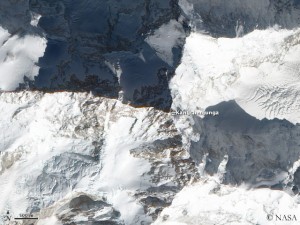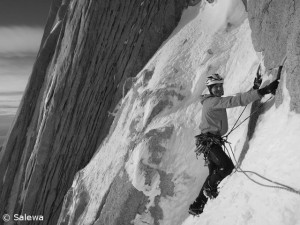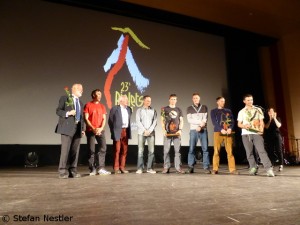Here’s to the non-eight-thousanders!
No matter whether you curse it, praise it to the skies or just use it pragmatically, no one will deny: the Internet has changed our lives and actually we can hardly imagine life without it. This also applies to mountain adventurers. Almost forgotten are the ancient times of Himalayan mountaineering, when expeditions were sent out, which were intended only to explore alpine destinations. Many of today’s best climbers prepare their projects on the screen – and make no secret of it. “I’ve looked a bit on Google Earth and more or less ‘found’ this mountain,” Austrian top climber Hansjoerg Auer told me before he set off to the almost 7,000-meter-high Gimigela Chuli East in Nepal. Along with his countryman Alex Bluemel, Auer wants to tackle the North Face of the mountain, which is located near the eight-thousander Kangchenjunga: “It’s not possible without a picture. Then I check out: How does the access look? Is it mega-dangerous or is the risk acceptable? What does the Base Camp look like?” Auer has not yet returned, but already now this fall season in the Himalayas once more proves: The mountaineering highlights are currently set even more on unknown five-, six- or seven-thousanders than on the eight-thousanders.
Candidates for next Piolet d’Or
Thus Russians Sergey Nilov, Dmitry Grigoriev and Dmitry Golovchenko succeeded a new route via the North Face of the 6,904-meter-high Thalay Sagar in the Indian Himalayas, which really deserves the description “direttissima”. Not in such a straight line, but not less spectacular, was the first ascent, which – as reported – the British Paul Ramsden and Nick Bullock succeeded in the North Face of Nyainqentangla Southeast (7,046 meters) in Tibet. British ‘old masters’ Mick Fowler (60 years old) and Victor Saunders (aged 66) also demonstrated that they haven’t forgotten anything: their first ascent of the North Buttress of the 6100-meter-high Sersank in North India will – like the above-mentioned successes –probably be on the shortlist for the next Piolet d’Or, the “Oscar of the mountaineers”. This also applies to the pioneering climb of German Ines Papert and Slovenian Luka Lindic, who – as reported – completed an often attempted route through the difficult Southeast Face of the 5842-meter-high Kyzyl Asker in the Tian Shan mountains.
More goals, thicker air and loneliness
Of course, there are still unsolved problems on eight-thousanders too, such as the direct Makalu West Face or the “Phantasy Ridge” on the very rarely attempted east side of Mount Everest, the Kangchung Face. But the slightly lower mountains have some undeniable advantages: Even more virgin walls and ridges are still waiting there. In addition, climbers need less time to acclimatize, making the expeditions shorter. Compared with eight-thousanders, the air is thicker so that more extreme climbing is possible. And, last but not least, the mountaineers can experience lonesomeness on these often hidden mountains and feel more easily like real adventurers. Therefore, a previous look at the digital mountain world is worthwhile.










